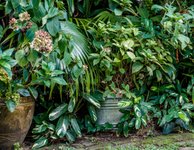the do-nothing farmer needed to be more attentive and sensitive to the land and seasons than a regular farmer. After all, Fukuoka’s ingenious method was hard-won after decades of his own close observations of weather patterns, insects, birds, trees, soil, and the interrelationships among all of these.
Jenny Odell • On how to grow an idea
It is not doing nothing; it is farming by subtraction.
Plants and animals exist within and are nourished by nature’s rejuvenating cycle, and from a modern viewpoint communing with nature can be extremely difficult at times.
In other words, humans add to and augment nature and in the process distance themselves from the intrinsic state of nature.... See more
Plants and animals exist within and are nourished by nature’s rejuvenating cycle, and from a modern viewpoint communing with nature can be extremely difficult at times.
In other words, humans add to and augment nature and in the process distance themselves from the intrinsic state of nature.... See more
Masanobu Fukuoka
can get some idea of the untapped potential of agriculture by reading F. H. King’s fascinating 1911 book, Farmers of Forty Centuries; Or, Permanent Agriculture in China, Korea, and Japan, which explains how these regions sustained enormous populations for millennia on tiny amounts of land, without mechanization, pesticides, or chemical fertilizers.
... See moreCharles Eisenstein • Sacred Economics: Money, Gift, and Society in the Age of Transition
Gardening is not just a set of tasks. It’s not restricted to backyards, courtyards, balconies. It can, and should, happen anywhere, everywhere. Gardening is simply a framework for engagement with our world, grounded in care, action and intimacy with place. To garden is to care deeply, inclusively and audaciously for the world outside our homes and... See more
Wonderground • Audacious Gardening: On Daring to Care
